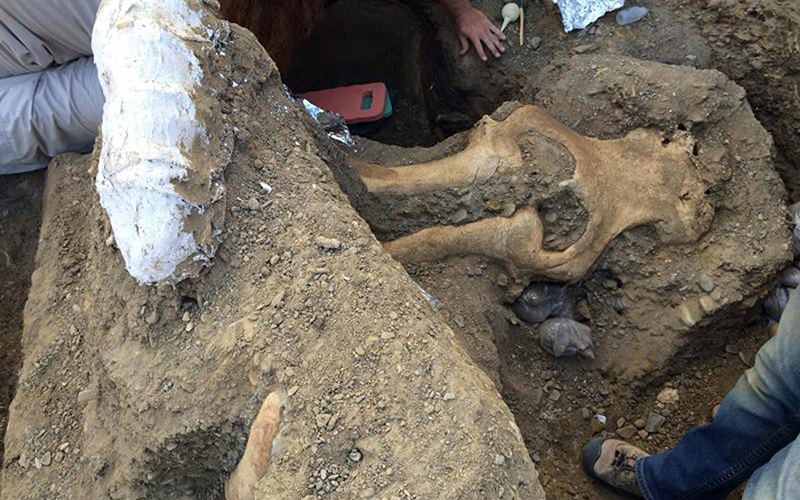LOS ANGELES – Scientists at the Channel Islands National Park, just off the Southern California coast, have excavated a rare and well-preserved mammoth skull fossil from Santa Rosa Island, the park announced Wednesday.

Justin Wilkins, a paleontologist from The Mammoth Site in South Dakota who worked with a team for the past week to unearth the fossil from an eroding stream bank, said the discovery is of high scientific importance.
“It’s pretty spectacular-looking,” he told the Ventura County Star. “It’s one of the best mammoth skulls I’ve seen, and I’ve seen a lot of good mammoth skulls,” he said.
READ MORE: New species of dinosaur found in Alberta’s Badlands
The fossil was first discovered in 2014 by Peter Larramendy, a biologist from the national park who came across its ivory tusk protruding from gravel sediment in a canyon wall.
Geologists at the U.S. Geological Survey have dated the charcoal samples adjacent to the fossil to about 13,000 years, suggesting the mammal coincided with the age of Arlington Man, the oldest human skeletal remains in North America, also discovered on Santa Rosa Island.
But questions about the species of the mammoth have arisen since the excavation. “It doesn’t fit the profile for a pygmy mammoth or their relatives on the mainland,” Wilkins told the Ventura County Star, referring to the Columbian mammoth which roamed the continent of North America before migrating to the Channel Islands.
READ MORE: 3.7-billion-year-old fossils found in Greenland show signs of life
The scientists say the skull is not small enough to definitively qualify it as a pygmy mammoth, which stood at about 6 feet tall, but also not large enough to identify it as a Columbian mammoth, which could measure up to 14 feet.
National park officials say the team hopes to find answers in its fossilized teeth, which could determine the mammoth’s age before death and clarify whether it is a pygmy, Columbian, or less likely, a transitional mammoth species.
The fossil will be transported by helicopter and boat to the Santa Barbara Museum of Natural History, where it will be preserved, studied and curated for the public.
- Ontario First Nation declares state of emergency amid skyrocketing benzene levels
- Singh mulls TikTok return as U.S. nears potential ban over security fears
- More financial institutes are offering crypto-services, survey shows
- Possible TikTok ban in U.S. looms after Biden signs bill, setting up legal fight



Comments